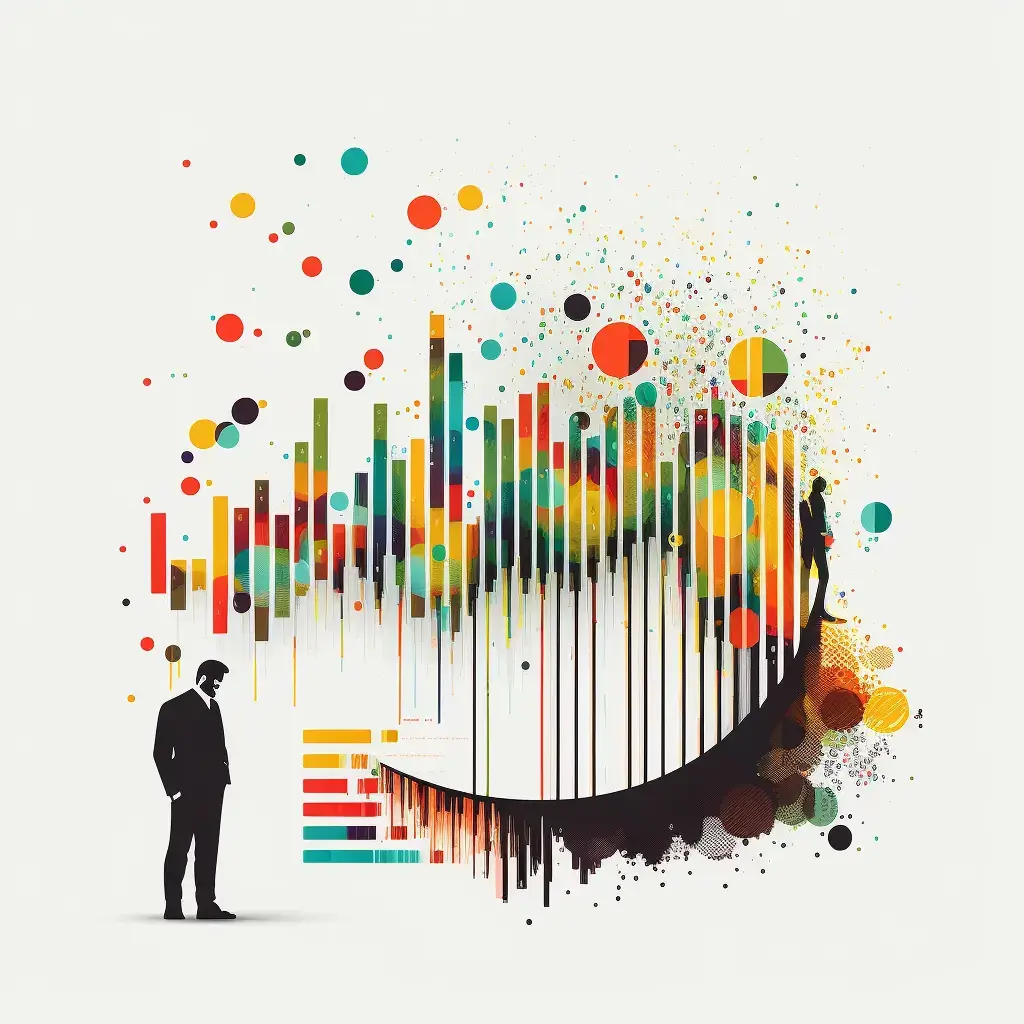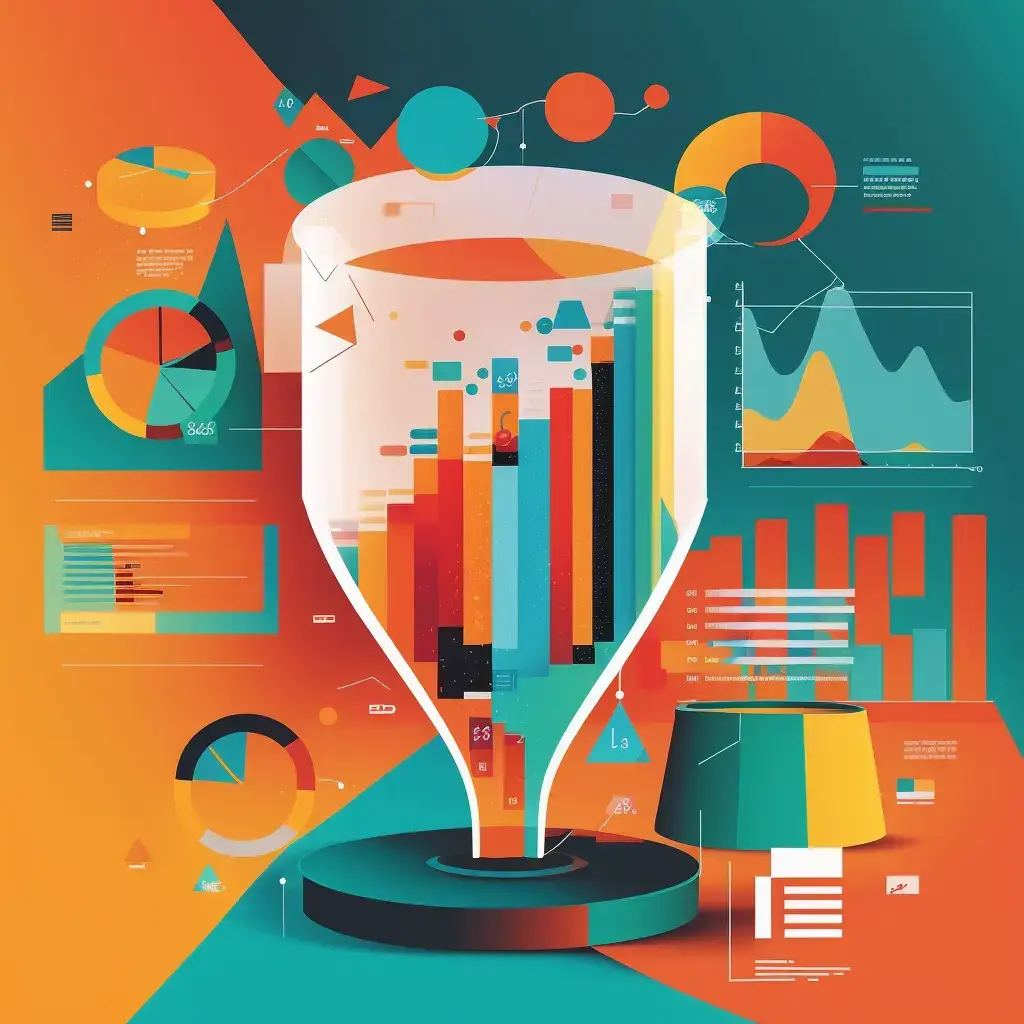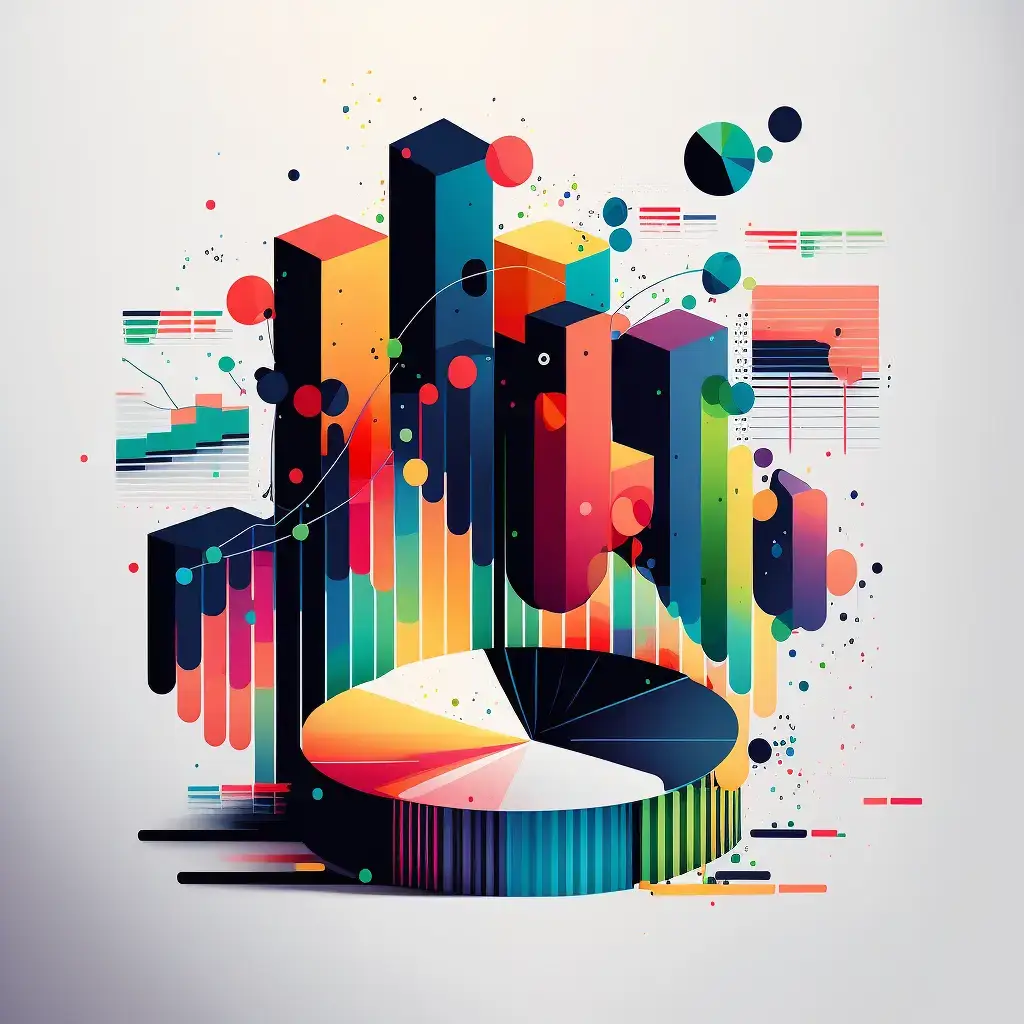
Captivating Data Stories: Mastering CRM Data Visualization
 Abe Dearmer
Abe Dearmer

Apr 26, 2023
∙
9 min read

Analytics
In this article, we delve into the world of data visualization within CRM and sales management, exploring its importance, types, best practices, top CRM platforms, and real-world examples.
Key takeaways:
- Effective data visualization enables clear communication, faster decision-making, and identification of patterns and trends.
- Various types of visualizations, such as charts, diagrams, and maps, serve different purposes in conveying data insights.
- Following best practices, like choosing the right visualization type and using color strategically, helps create impactful visualizations.
- Top CRMs for data visualization include Teamgate, Salesforce, and Hubspot.
- Real-world examples demonstrate the practical applications of data visualization in sales and marketing.
Table of Contents
Introduction to Data Visualization
Data visualization is the art and science of transforming complex information into visually engaging and easily digestible stories. It empowers businesses to derive insights and make informed decisions by breaking down intricate data sets into simple, intuitive visual representations. In the context of CRM (Customer Relationship Management) software and sales management, data visualization plays a crucial role in understanding customer behaviors, tracking sales performance, and uncovering opportunities for growth.
Importance of Data Visualization
Effective communication: Data visualization helps to convey complex information in a format that is easily understood by non-experts. By presenting data in a visual manner, it becomes more accessible and shareable, facilitating collaboration and promoting a data-driven culture within the organization.
Faster decision-making: Visual representations allow decision-makers to grasp the underlying patterns and trends in the data quickly. This leads to quicker identification of issues and opportunities, enabling organizations to respond promptly and maintain a competitive edge.
Identifying patterns and trends: Data visualization helps to uncover hidden relationships, correlations, and trends within large data sets. By providing a clear view of the information landscape, businesses can identify new opportunities, detect potential risks, and optimize their strategies accordingly.
Types of Data Visualizations
Charts:
- Bar chart: Represents categorical data using horizontal or vertical bars, with the length or height of each bar proportional to the data value.
- Line chart: Displays continuous data over time, connecting individual data points with lines to show trends and changes.
- Pie chart: Depicts data as slices of a circle, with the size of each slice proportional to its corresponding value.
- Scatter plot: Visualizes the relationship between two variables by plotting data points on a Cartesian plane.
- Area chart: Similar to a line chart but with the area beneath the line filled in, emphasizing the magnitude of changes over time.
Diagrams:
- Flowchart: Represents processes or workflows using a series of connected shapes and symbols.
- Venn diagram: Illustrates the relationships between different sets using overlapping circles or other shapes.
- Mind map: Organizes hierarchical information in a branching, tree-like structure.
Maps:
- Choropleth map: Displays geographical data using a color scale to represent different data values in different regions.
- Heat map: Visualizes data density using color intensity to represent the concentration of data points in a specific area.
- Symbol map: Represents data with symbols of varying size or color, placed on a map according to their geographic coordinates.
Interactive visualizations:
- Dashboards: Provide an at-a-glance view of key performance indicators (KPIs) and other metrics, typically using a combination of charts, maps, and tables.
- Sliders and filters: Allow users to manipulate and explore data by adjusting parameters or filtering the data set.
- Animations: Bring data to life by adding movement, transitions, and interactivity to visualizations.

Best Practices for Creating Data Visualizations
Choose the right visualization type: Select the appropriate visualization format based on your data type, the relationships you want to highlight, and your audience's needs.
Keep it simple and clean: Avoid clutter and complexity by focusing on the most important information and using whitespace effectively. Eliminate unnecessary elements that could distract from the key message.
Use color strategically to emphasize, differentiate, and group data elements. Be mindful of color associations and choose a palette that enhances the data's readability.
Maintain consistency: Establish a consistent visual language by using the same design elements, colors, and styles throughout your visualizations. This will help your audience process the information more efficiently.
Ensure accessibility: Design your visualizations to be accessible to all users, including those with visual impairments or color blindness. Use high contrast colors, clear fonts, and alternative text descriptions to make your visualizations more inclusive.
Top CRMs for Data Visualization
FiveCRM: FiveCRM offers powerful data visualization capabilities through its customizable dashboards, real-time reporting, and data-driven insights. Users can easily create and share visualizations to track KPIs, monitor sales performance, and identify trends that can drive business growth.
Teamgate: Teamgate is a CRM platform that boasts an intuitive interface and advanced data visualization features. It includes a range of pre-built charts and reports, allowing users to gain insights into their sales pipeline, customer segmentation, and team performance.
Salesforce: As a leading CRM provider, Salesforce delivers robust data visualization options through its native reporting and analytics tools, such as Salesforce Reports and Dashboards. It also integrates seamlessly with third-party tools like Tableau for enhanced data visualization capabilities.
Hubspot: Hubspot is a comprehensive CRM solution with built-in data visualization tools, allowing users to create custom reports, track sales metrics, and visualize customer interactions. Its intuitive interface and seamless integrations make it an ideal choice for businesses looking to leverage data-driven insights.
Real-world Examples of Effective Data Visualization
Briefing clients on lead generation performance: By creating a clear and concise dashboard, sales teams can easily showcase their lead generation efforts to clients. Visualizing this data allows clients to quickly understand the performance of their campaigns, identify trends, and determine ROI.
Understanding your Sales Team's rates of effort: Sales managers can utilize data visualizations to analyze their team's performance and identify trends in effort levels. This can help optimize workflows, allocate resources more effectively, and ultimately increase productivity.
Identifying and fixing weak points in your sales cycle: By visualizing the sales funnel and tracking conversion rates at each stage, businesses can pinpoint potential bottlenecks and areas for improvement. Data-driven insights can guide targeted strategies to streamline the sales process and enhance overall performance.
Determining if your marketing efforts are effective: Data visualizations can help marketing teams assess the impact of their campaigns on sales and customer engagement. By analyzing metrics such as click-through rates, conversion rates, and customer lifetime value, businesses can optimize their marketing strategies to maximize ROI.

Common Data Visualization Mistakes to Avoid
Misleading representations: Ensure your visualizations accurately represent the data and do not manipulate or distort the information to support a specific narrative.
Overloading with information: Avoid overwhelming your audience with too much information. Focus on the most important insights and use multiple visualizations if necessary to convey complex data sets.
Ignoring context: Consider the context in which your visualizations will be viewed and ensure they are appropriate for the intended audience. Provide sufficient background information and explanations to help users interpret the data correctly.
Poor design choices: Steer clear of design elements that detract from the data's readability, such as inappropriate colors, confusing layouts, or overly complex chart types.
Conclusion and Future of Data Visualization
In summary, data visualization is an essential tool for CRM and sales management, enabling businesses to communicate complex information effectively, make informed decisions, and identify trends and patterns. As technology advances and data-driven decision-making becomes increasingly important, we can expect further innovation and sophistication in data visualization techniques.
FiveCRM is well-positioned to help businesses harness the power of data visualization, providing customizable dashboards, real-time reporting, and actionable insights. By mastering the art of data visualization, organizations can unlock the full potential of their CRM software and drive meaningful business growth. Contact FiveCRM to book your demo today!
Frequently Asked Questions
What are the key benefits of data visualization?
The key benefits of data visualization include effective communication of complex information, faster decision-making, identifying patterns and trends, promoting a data-driven culture within organizations, and facilitating collaboration among team members.
How can I choose the best chart or diagram for my data?
To choose the best chart or diagram for your data, consider the type of data you have, the relationships you want to highlight, and the needs of your audience. Familiarize yourself with various visualization formats and their specific purposes, and select the one that effectively communicates the insights you want to convey.
What are the most popular data visualization CRMs?
The most popular data visualization CRMs include FiveCRM, Teamgate, Salesforce, and Hubspot. These CRM platforms offer robust data visualization capabilities, customizable dashboards, and real-time reporting, allowing users to derive insights and make data-driven decisions.
How can I improve my data visualization skills?
To improve your data visualization skills, follow these steps:
- Study various visualization formats and their use cases.
- Analyze and learn from well-designed visualizations.
- Practice creating visualizations with different data sets.
- Familiarize yourself with data visualization tools and software.
- Stay up-to-date with the latest trends and advancements in data visualization.
- Seek feedback from peers and experts to refine your work.
What are some examples of effective data visualization in the CRM?
Some examples of effective data visualization in the CRM include:
- Dashboards that display lead generation performance for briefing clients.
- Visualizations that help understand your sales team's rates of effort.
- Charts that identify and fix weak points in your sales cycle.
- Visualizations that determine the effectiveness of marketing efforts by analyzing metrics such as click-through rates, conversion rates, and customer lifetime value.
Michael King says...
"I can’t think of a time where a client has requested something that we weren’t able to do with FiveCRM. Unlike most systems, it has a lot of flexibility."

Managing Director, Senior Response
JAINE HUSBANDS SAYS...
“Each client, and each of their campaigns, has its own unique specifications. We essentially needed to set up mini CRMs on one platform to meet those requirements.”

Operations Director, Team Marketing
Why wait?
Start improving your outbound efficiency now, with the most customizable Sales solution on the market.